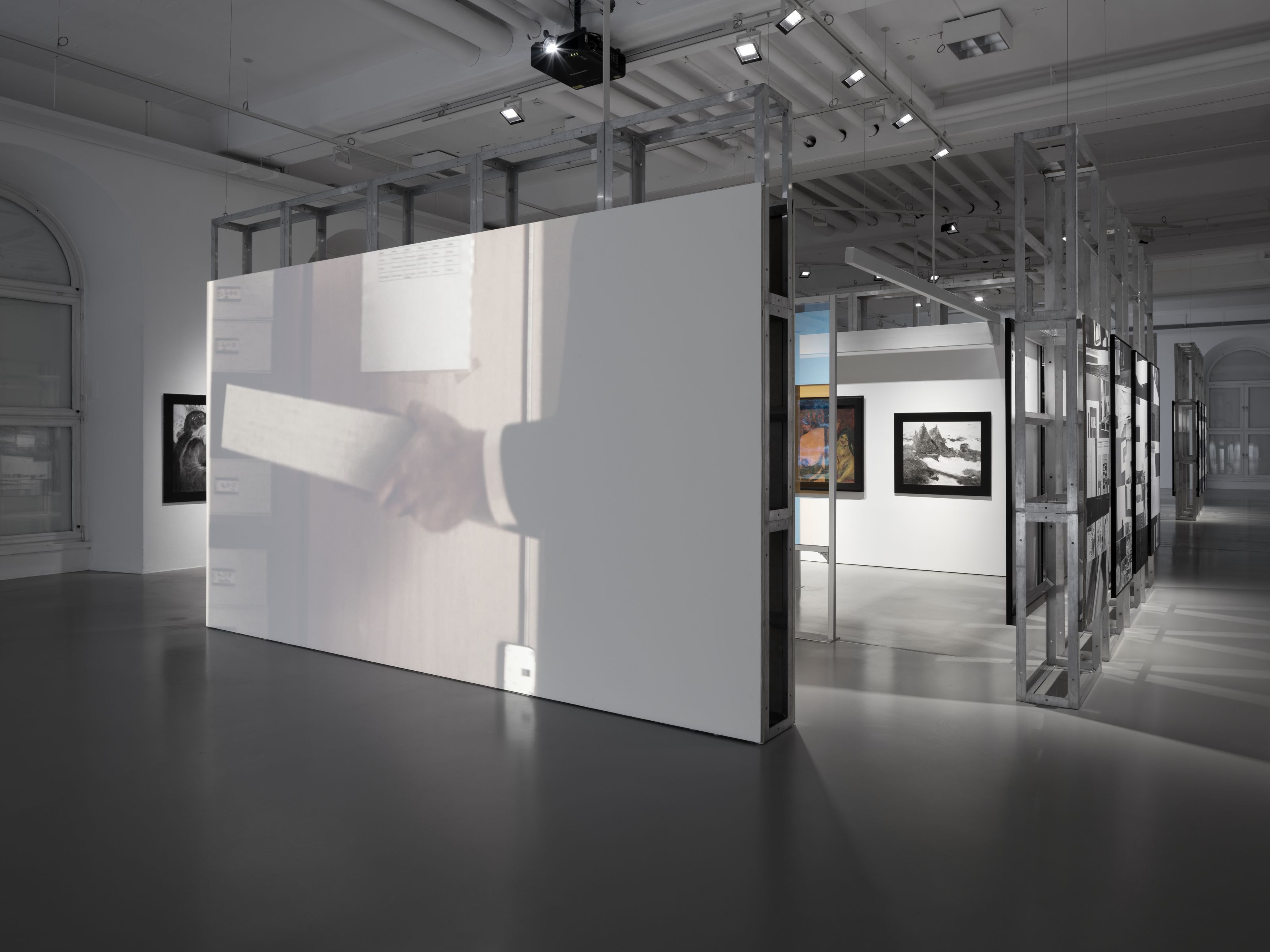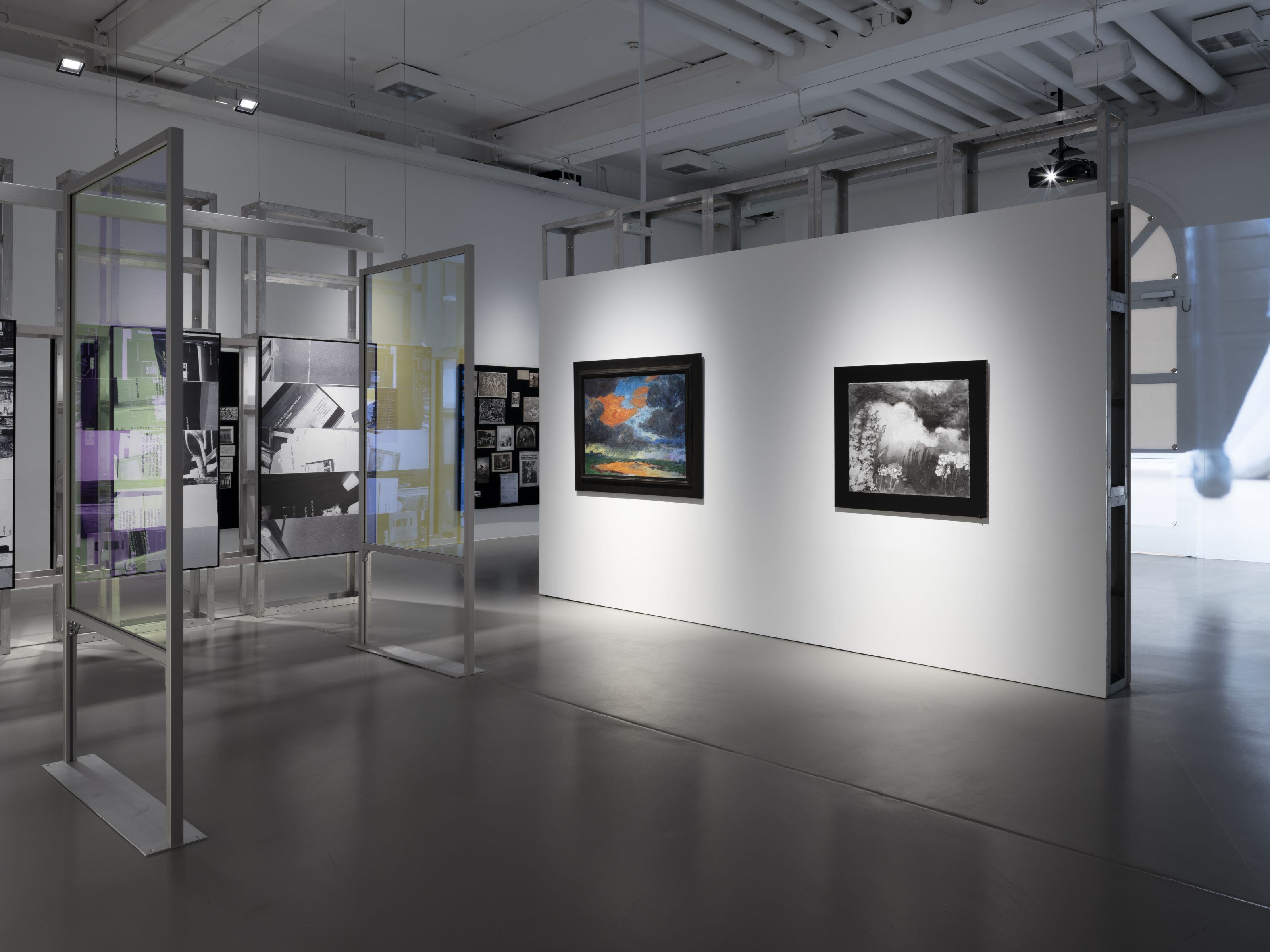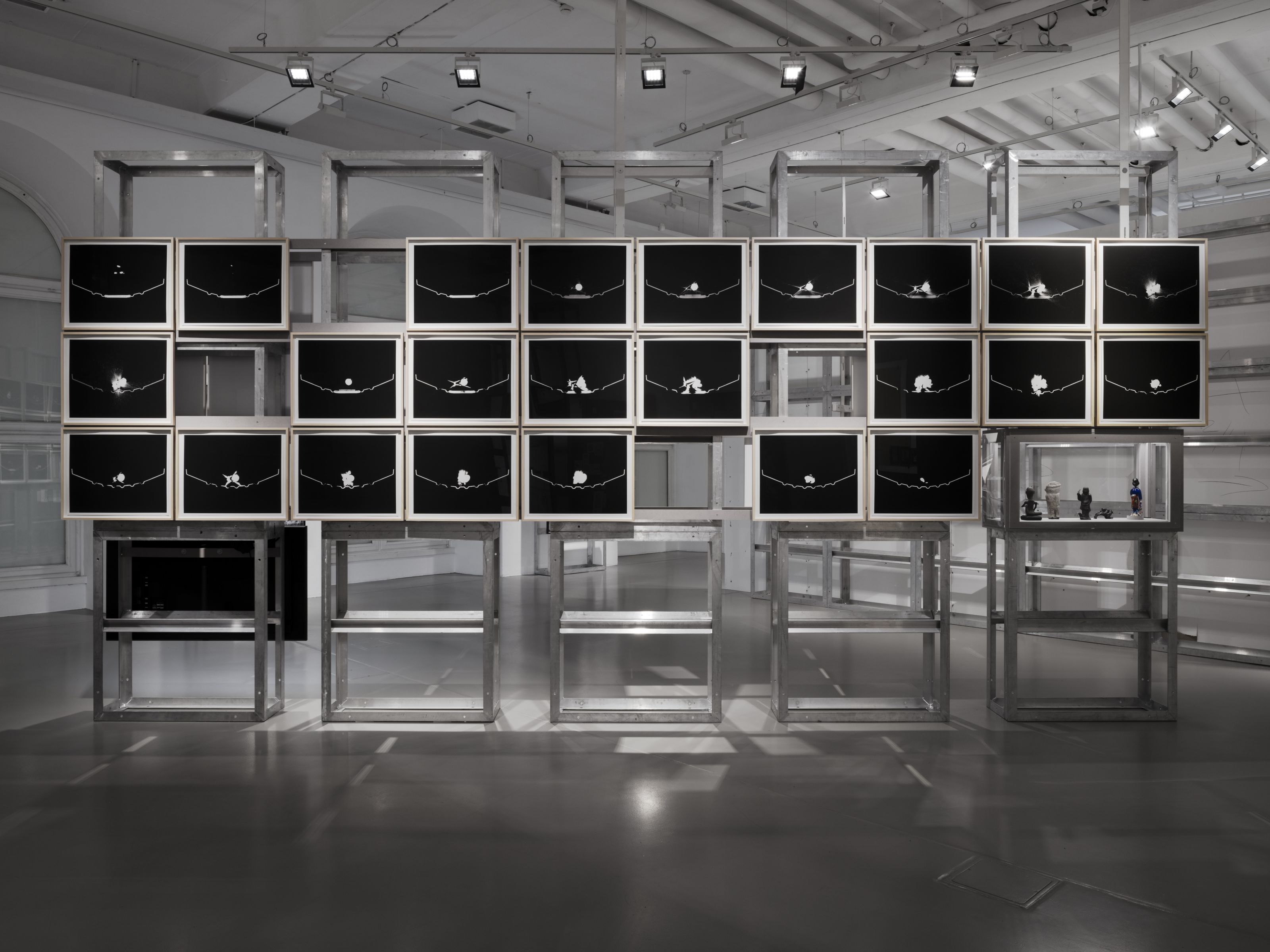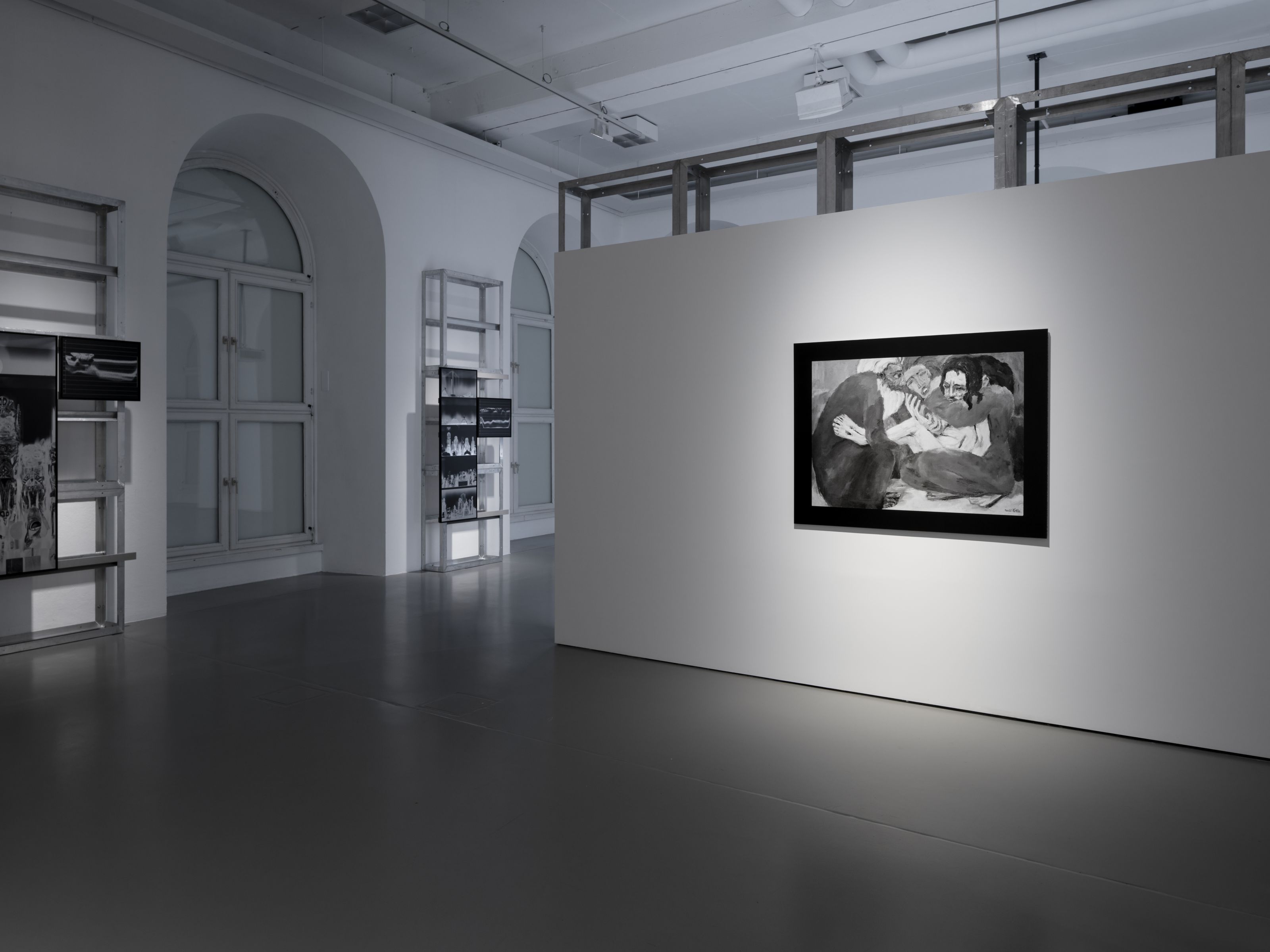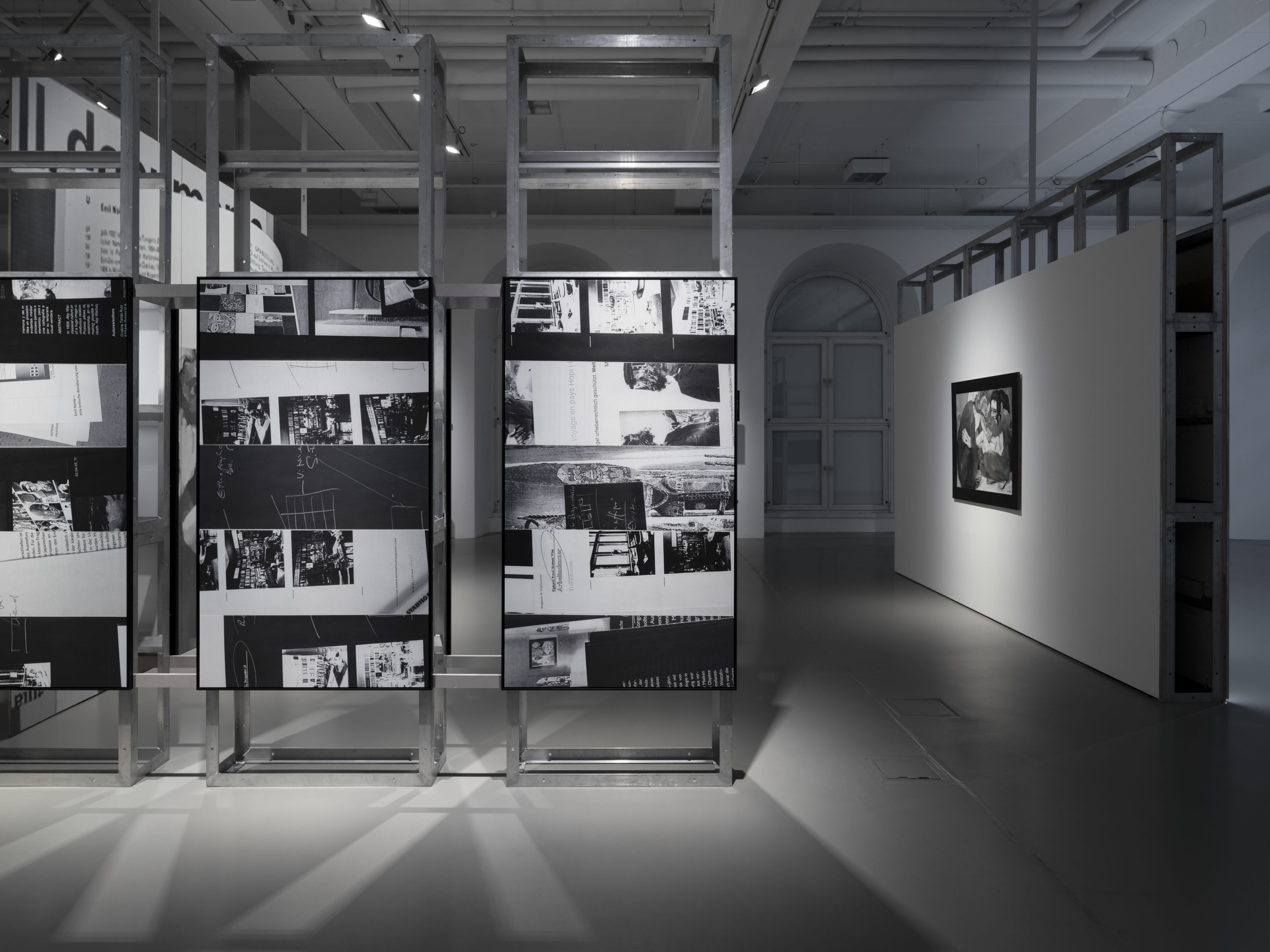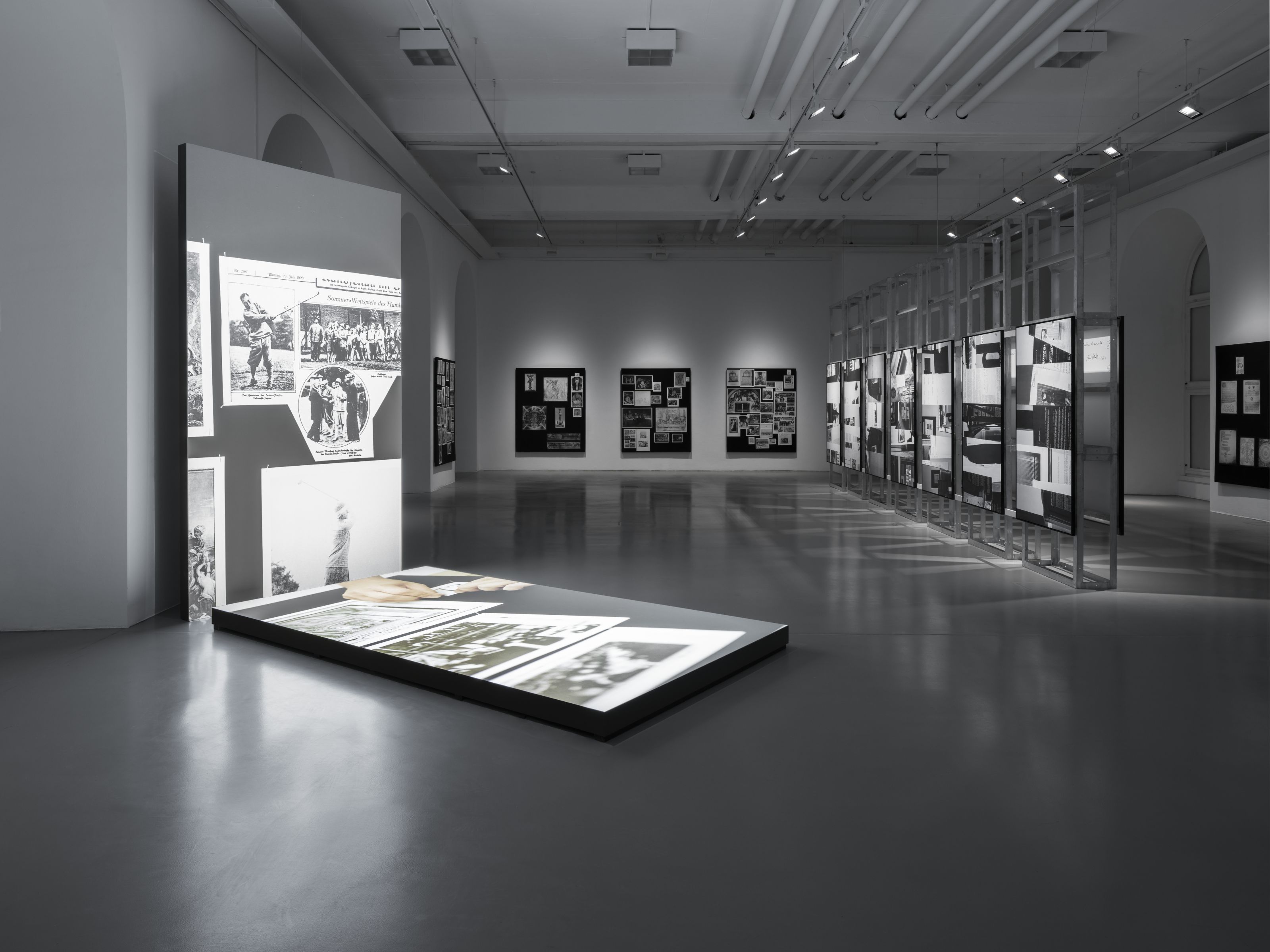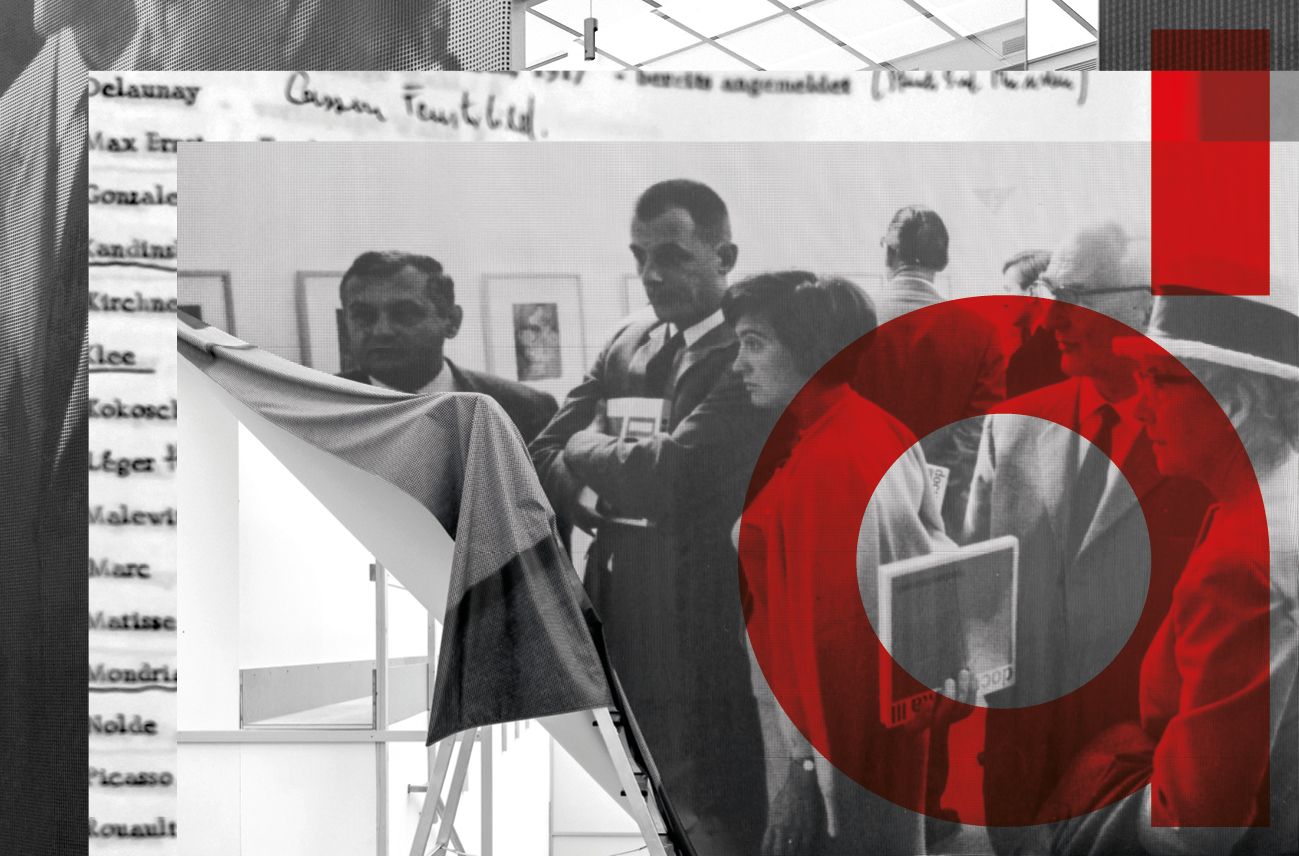nolde/kritik/documenta
2022
Emil Nolde (1867–1956) is one of the most famous artists of the European avant-garde. His current perception is shaped by historical mythmaking and its deconstruction. After the Second World War, he himself and contemporary art historiography pushed the image of the ostracized artist. Research in recent years has brought back into the public consciousness Nolde as an anti-Semite and his attempts to rise to become one of the most important National Socialist artists.
The Düsseldorf conceptual artist Mischa Kuball (b. 1959), supported by the Nolde Stiftung Seebüll, has set out to trace this ambivalent figure. First results were on view in the winter of 2020/2021 in the exhibition Emil Nolde—a critical approach by Mischa Kuball at the Draiflessen Collection in Mettingen. The show resulted in a collaborative project with the documenta archiv.
In Kassel, Kuball will continue the search for traces in a modified form at the end of 2022: the focus will be on the three-time documenta artist Emil Nolde, his painting, his access to artifacts of colonial provenance, and his public reception as a celebrated representative of expressionist painting. From today's perspective, the exhibition explores the entanglements of work and biography and questions the contradictions of modernity that clash exemplarily in Nolde's artistic figure. Kuball's work opens spaces of discourse that go beyond the individual figure of Nolde and invites an exciting reexamination not only of Nolde’s person, but also of the relationships between art and politics.
The course of the exhibition approaches Nolde in several ways: it is about presence and absence in the art and exhibition business, about his enduring popularity, the removal of his works, considered “degenerate,” from public museums during the Nazi era, and the myth of the “unpainted pictures” established after 1945—watercolors that Nolde created in alleged isolation during World War II. In this context, the first three documenta exhibitions in 1955, 1959, and 1964 are of central importance. The works shown at that time, some of which are now returning to Kassel, are the starting point in Kuball's project. In particular, the presentation of the “unpainted pictures” at the third documenta contributed significantly to the creation of myths around the “ostracized” painter. Mischa Kuball traces Nolde's working and living environment in Seebüll, today the seat of the foundation, in cinematic black-and-white projections that permanently change our view of the originals.
Focussing on the idea of the archive Kuball traces the painter in Seebüll, his former working and living space, and the foundation's current headquarters in cinematic black-and-white shots. Complementary research of the mechanisms of remembrance along the panels of Aby Warburg's Mnemosyne-atlas deepens this archival approach.
The project realizes a critical examination of questions of contemporary history and aesthetics of effect that are relevant beyond Nolde.
Accompanying the exhibition in Kassel there will be a program of discussion panels, lectures, and workshops.
A catalogue book (in German and English version) appeared in summer 2022. It brings together philosophical, philological, historical and art historical contributions, published by dcv Berlin.
Works
Emil Nolde
- Zwei Frauen mit Kind (Two Women with a Child), 1930s–1950s
- Gruppe mit Kindern (Group with Children), 1930s–1950s
- Buckeliger Alter (Old Hunchback), 1930s–1950s
- Zwei alte Männer (Two Old Men), 1930s–1950s
- In der Garderobe (In the Dressing Room), 1930s–1950s
- Groteskes Paar (sich umarmend)(Grotesque Couple [Embracing]), 1930s–1950s
- Zwei groteske alte Männer und Fledermaus (“Nächtliche Gestalten”) (Two Grotesque Old Men and a Bat [“Nocturnal Figures”]), 1930s–1950s
- Spanierin (Spanish Woman), 1930s–1950s
- Zwei Damen (Two Ladies), 1930s–1950s
- Zwei Frauen vor blauem Himmel (Two Women against a Blue Sky), 1930s–1950s
- Zwei Menschen(Two People), 1930s–1950s
- Im Theater (At the Theater), 1930s–1950s
- Das junge Mädchen (The Young Girl), 1930s–1950s
- Seltsame Dame (Strange Woman), 1930s–1950s
- Drei Frauen (Wartende junge Frau)(Three women [Waiting Young Woman]), 1930s-1950s
- Frau und zwei Männer – “Anklage” (Woman and Two Men – “Accusation”), 1930s–1950s
- “Vergebung” (“Forgiveness”), 1930s–1950s
- Meer mit gelber Sonne (Sea with Yellow Sun), 1930s–1950s
- Hochgebirge (High Mountains), 1930s–1950s
- Grablegung (Burial), 1915
- Herbstwolken, Friesland (Autumn Clouds, Frisia), 1929
- Blumen und Wolken (Flowers and Clouds), 1938
- Familie (Family), 1931
- Der Herrscher (The Ruler), 1914
- Anbetung (Adoration), 1922
- Crouching figure (movable arms), nineteenth century
- Japanese woman in a blue kimono, n.d.
- Guardian figure, 1200−1450 CE?
- Lion-Dog, Meiji Era (1868–1912)
- Figure of the immortal Liu Hai with double gourd in his raised hand, n.d.
Mischa Kuball
- making of Nolde/Kritik/Kuball, 2020
- ethnographica_Nolde/Kritik/Kuball, 2020
- ethnographica_lumetri_Nolde/Kritik/Kuball, 2020
- unpainted_Nolde/Kritik/Kuball, 2020
- ct_scan_video_ethnographica_Nolde/Kritik/Kuball, 2020
- ct_scan_ethnographica_Nolde/Kritik/Kuball, 2020
- storage_room_Nolde/Kritik/Kuball, 2020
- lumetri_scope_Nolde/Kritik/Kuball I−VI, 2020
- scan_room_Nolde/Kritik/Kuball, 2020
- research_desk_Nolde/Kritik/Kuball, 2020
- research_desk_nolde/kritik/documenta, 2022
- public_sculpture_Nolde/Kritik/Kuball, 2020
- making of Mnemosyne (after Aby Warburg), 2021
Aby Warburg
- Bilderatlas Mnemosyne (1, 3, 5, 6, 23A, 31, 32, 36, 37, 39, 45, 47, 55, 65, 72, 77, 78, 79), 1924-1929
